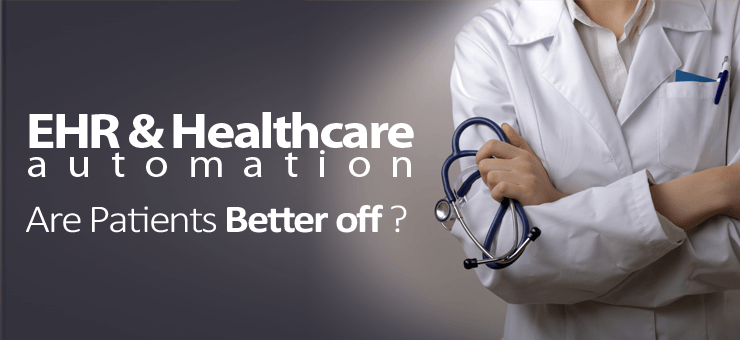Information Technology has completely revolutionized the way healthcare is being managed by providers nationwide. From a point where EMRs were just used to record patient vitals, the technology has expanded to include cross-platform information sharing, meaningful use of patient data, patient portals, electronic prescribing, electronic labs and many others.
Where rising healthcare costs have been a source of huge concern for the U.S. government over the last fifteen years, it has certainly improved the quality of patient healthcare manifolds. Patients can schedule appointments with their physicians online, receive alerts from their clinics, see their vital charts easily, etc.
Let’s discuss some of the benefits Electronic Health Records (EHRs) have had on improving patient care in the last decade.
Access to good care
By using EHR, physicians, hospitals and healthcare providers are able to improve their workflows and reduce inefficiencies from their systems. As a result, the ultimate beneficiary of the healthcare system – patients, now has access to superior healthcare and improved services.
Time saving
Using EHRs helps all the entities involved in healthcare to save plenty of time. With automated systems that link EHRs with Practice Management and billing software, physicians can see important data in real time and make informed decisions. On the other hand, patients are also able to save time by not having to wait in unnecessarily long queues at a practice.
Quick retrieval of vital stats
With the help of a few clicks, physicians and healthcare providers are able to access patient data whenever they want. With the help of EHRs and mobile devices, they are able to take their practice anywhere they want and simply use the system to enter patient notes or view/edit their vital stats.
Less billing errors
Because EHRs conveniently integrate with practices’ billing solutions, they are able to file claims quickly and in an error-free manner. This also results in fewer claims rejections and improved cash flow for the practices. From the patients’ perspective, they also are prone to less billing errors in those practices which make use of information technology for healthcare.
Patient portals
One of the biggest advantages of using EHR systems is that patients are able to communicate in real time with their practices. They can complete patient registration on the internet, schedule appointments in real time, interact with their physicians, send refill requests, view lab results around the clock, receive automated alerts on their mobile devices and easily access their current and past medical statements whenever they want.
Interoperability
Another huge advantage of using an EHR system for patients is that the systems are interoperable – meaning that whatever information their physician has, can be meaningfully shared with other entities in the healthcare delivery model. Health information exchanges, electronic lab orders/results, radiology and imaging services, cross-clinical sharing of data and DICOM compliant imaging equipment can be used easily with systems which are interoperable.
Identify safety problems
EHRs are able to see all the issues at a glance that a batch of population sample is suffering from. This allows for better usage of data to identify safety/health related issues for any area and for people with any demographics.
Detect epidemics
Another usage of EHRs is that they are able to predict and address epidemic issues for any area using historical data and other factors. This is a great tool which allows for government regulatory bodies to keep the healthcare industry in check.
These are some of the benefits of EHR technology which has improved patient healthcare manifolds in the last decade.


Join the Discussion!